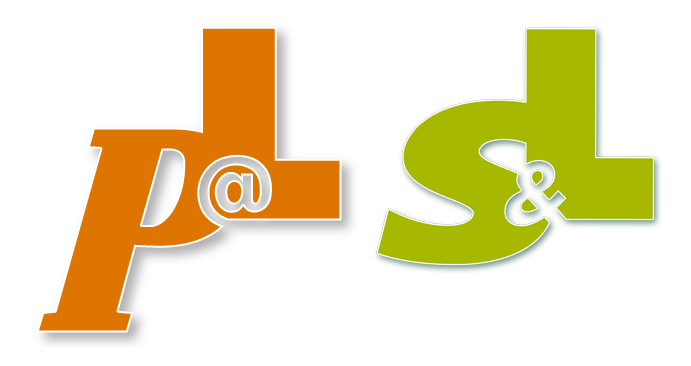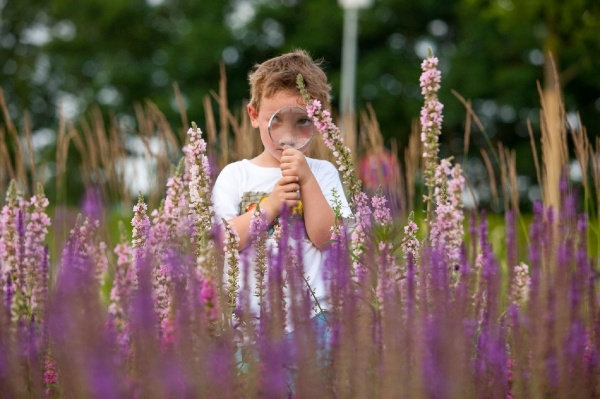Fair city sharing - what can urban planning contribute?
Our cities have grown over centuries. This also reflects the history of urban society, i.e. who was in charge, which professions were accessible to whom. A city is a multi-layered structure:...


YOUR FORUM FOR PLAY, SPORTS UND LEISURE AREAS

Hanspeter Faas: Yes, you could definitely say that and, indeed, in both the techni-cal-functional aspects and in the broader sense. First of all, on the one hand, we have, of course, to match the processes and for that to happen we had to sort out some teething problems in the first week. Of course, with a major event, which ex-tends over 185 days, not everything can always run perfectly, but we are constantly working on our BUGA (National Garden Show) and are getting better with every passing day. However, for things to run smoothly, it is equally important that the con-cept of a National Garden Show works in people’s minds. We constantly get positive feedback from visitors and are of course particularly pleased that the concept of the inner-city BUGA Koblenz 2011 is being so well received, even by Koblenz inhabi-tants.
P@L: The question of figures is being asked over and over again: How is BUGA Koblenz calculated?
Hanspeter Faas: The whole budget of the National Garden Show Koblenz 2011 is 102 million EUR. Of which 49 million EUR is provided by the State of Rhineland-Palatinate, which shows how important it is to assess this major event, crossing the boundaries of town and region. 28 million EUR come from the city of Koblenz, a fur-ther 25 million EUR has to be generated by the National Garden Show Koblenz 2011 itself through tickets, licences and other sources of income. This contribution is met if we are able to reach a figure of 2 million visitors to the grounds.
P@L: With the idea of an inner-city National Garden Show, the city of Koblenz pre-sented a new way of dealing with public space. The National Garden Shows became an instrument of urban development from within. What is this concept like?
Hanspeter Faas: Yes, the concept of the National Garden Show Koblenz 2011 is, in fact, remarkable: The grounds of the BUGA Koblenz 2011 are extended and distrib-uted across three historical points in urban areas – the centrally-located Electoral Palace and the Flower Garden at Deutsches Eck as well as, high above the city, the enthroned Ehrenbreitstein Fortress. Central, partly unused, open spaces got a facelift and changed into fascinating landscapes within the city. The three core areas are connected to the refurbished Rhine embankment promenades which are part of the correspondence section of BUGA and are also freely accessible during the exhibition. And, of course, this also includes the BUGA cable car which successfully opened last year, which connects the Koblenz inner city to the fortress, across the Rhine, and is not just fast, comfortable transportation, but also offers breath-taking views. One of the special features of this garden show is that it takes place in the heart of the city and this means that it also gets closer to people. It “touches” them in the truest sense of the word. From the outset, the people of Koblenz have shown much interest, have introduced their ideas and have been committed. They identify unbelievably strongly with the project – in the BUGA circle of friends and elsewhere. One of the special features is also the unique landscape at the confluence of the rivers Rhine and Mosel, where, with the Upper Central Rhine Valley and the Limes, two UNESCO world heritage sites cross one another. And, after Gibraltar, what national garden show can claim to have and utilise the second largest fortification in Europe in the area? Sites of historical interest, which – thanks to the National Garden Show – are put into a new context and are re-interpreted, can be found in all areas.
P@L: And how does the sustainability look?
Hanspeter Faas: The notion of sustainability plays an important role in the history of the national garden shows. After all, there is no point moving on after the event, with-out having any long-term use. Therefore, considerations are always made in the planning, such as how to tweak it or even how a long-term improvement can be achieved in the cities concerned through the creation of exhibiting areas. Prominent examples of this are, for instance, the Rhine meadows in Bonn or the Rhine-side parks in Cologne. Even in Koblenz, special attention is paid to the sustained strengthening of inner city areas. This means, for instance, that open spaces were created by redesigned green spaces, promenades along the Rhine and Mosel were redesigned or the complete redevelopment of the Ehrenbreitstein Fortress.
P@L: We are the specialist magazine for children’s playgrounds and leisure areas. So here’s the question: How do children play at BUGA?
Hanspeter Faas: Children are very welcome at BUGA Koblenz 2011 and get to ex-perience diverse play: Whether in the water playground, climbing park or skater plaza – there’s something for everyone... small, medium, large. Also, the diverse children’s and family programme invites you to get active with topics such as nature and sus-tainability and offers them the chance to experiment and discover things in different ways. Therefore, the playground at the Electoral Palace maintains its traditional set-ting. The “Jewellery Box of Empress Augusta” invites to play with oversized mirrors and hairpins as swings and seesaw. For older ones, the new skater park, also at the palace, is best suited for having fun while skating about. The water playground in the exhibition area “Flower Garden at Deutsches Eck” is devoted entirely to the topic of water and, on the one hand, offers splash-pleasures, and on the other hand water world experimentation. At seven play stations, children can experience the element of water in different forms. There are calm water surfaces, strong gushers, weirs, water wheels and so on. The climbing playground at the Bleidenberg factory in Ehrenbreit-stein Fortress Park is an exciting, near-nature adventure playground. The high point is the approx. 50 metre-long, never-ending climbing wall which is built with tree houses for relaxation and observation.
P@L: Will you be exploring new paths in Koblenz with the BUGA playgrounds? Or were there already comparable playgrounds?
Hanspeter Faas: When designing the playgrounds, we didn’t buy any equipment ready-made from the catalogue, but generally speaking had them specifically de-signed and manufactured. It was important for us to have individual solutions which capture the charm of the place and also match the exhibition concept of BUGA Koblenz 2011. For this reason, our playgrounds are genuinely unique items.
P@L: Were playgrounds which were not in the core area cleaned up too?
Hanspeter Faas: Yes, outside the BUGA area, an existing playground situated on the right bank of the river Rhine was refurbished. The playground was extended to 400 m² and is attached to two levels. In the upper area there are new items of play equipment such as buoys, parts of ships, a sensory wall as well as a speaking tube and telescope, and in the lower section there is an oversized sandpit.
P@L: Were children involved in the planning?
Hanspeter Faas: Children were involved in different ways in the planning and im-plementation of the playgrounds at BUGA Koblenz 2011. For instance, the “Skater Plaza” at the Electoral Palace was organised by the young people of the city of Koblenz and tailored to different levels of difficulty by a Berlin specialist company. Differences in altitude of up to a metre and different, specially-made elements made from concrete make the area interesting for skateboarders, rollerbladers and BMX riders. Even with the water playground, children were directly involved in the design of the play area. In two workshops the children and teenagers had the chance to de-sign a part of the playground, namely the step and seat stones, as “islands” on water surfaces. Therefore, this gave rise to seahorses, mermaids, waves and whirlpools, which the children can admire behind the Deutsches Eck for many years to come.
P@L: For which age groups were the new play areas designed and will these con-tinue to remain accessible after BUGA too?
Hanspeter Faas: All play areas will also continue to exist after BUGA Koblenz 2011 and offer many generations of children a great deal of fun. As a child you can almost grow up with the playgrounds in Koblenz: A young child would perhaps splash around in the water playground and seesaw in the “Jewellery Box of Empress Au-gusta”; at primary school age they could climb on the varied adventure playground at the Bleidenberg factory, and a teenager could coolly skate across the skater plaza.
P@L: More and more local authorities have less and less money. How do Koblenz and the surrounding local authorities benefit from BUGA?
Hanspeter Faas: The National Garden Show Koblenz 2011 has an enormous thrust for the town and region – short, medium and long-term. The city of Koblenz won in terms of attractiveness of its central areas, you just think of the reconditioned prome-nade with the new Rhine levels or the restructuring of the palace grounds. There are surplus values which do not only inspire BUGA visitors today, but will also, in future, sustainably enhance the cityscape and strengthen the touristic significance of Koblenz over the years. In addition there is, of course, the immediate effect of the National Garden Show Koblenz 2011 – in the years of preparation which go into the building construction and the city’s hotels and gastronomy. Therefore, the city and the whole region of the world heritage “Upper Middle Rhine Valley” will experience a lasting strengthening of the structures. It is difficult to grasp that in concrete figures, but the figures of the National Garden Show in Munich in 2005 illustrate that a na-tional garden show allows the domestic industry to grow during the course of it. Day guests – additional entry – during their visit brought in an average of 17.50 EUR per head. With guests staying over in the city, the revenue was 80.30 EUR per head and day, from which most of the costs were related to food and board. At the National Garden Show Munich 2005, city sightseeing tour figures rose by 24 percent – an in-dicator of how much the city’s tourism and economy were boosted. When you look at these figures, you must take into consideration the fact that the National Garden Show Munich 2005 was located a good distance away from the city centre, whereas the National Garden Show Koblenz 2011 will take place right in the heart of the city – quite close to the shops, places to eat and the places of interest.
P@L: 3,000 events at a summer-long festival. What do you specifically recommend?
Hanspeter Faas: It is difficult to pinpoint one single highpoint, because there is a whole string of special places and great events. For me, as a gardener, the Fortress Park with its hall exhibits is definitely a place worth visiting – it inspires me with its continually-changing exhibitions. Then there are the different stages with their varied programme, the Ludwig Museum and the exhibitions in the Ehrenbreitstein Fortress, which will make your visit to BUGA unforgettable. Ultimately, the special thing about the National Garden Show is that you can simply drift across the grounds and, de-pending on your mood, you can decide what you want to do. The varied programme ranges from loud to quiet, from informative to entertaining – available every day.
Furthermore, visitors should definitely pay a visit to Stolzenfels Castle which isn’t ac-tually located on the grounds, but is easily accessible by ship. It is worth not only vis-iting the National Garden Show Koblenz 2011 as a one-off, but extending the trip by a few days or coming back again, in order to exhaust all the tourist highlights of this beautiful region.
The interview was conducted by Thomas R. Müller (Playground@Landscape)